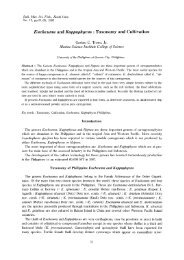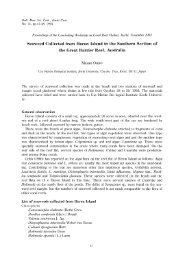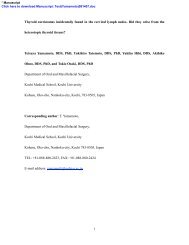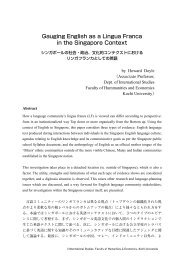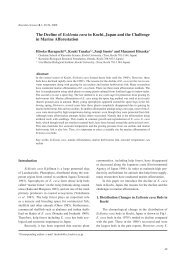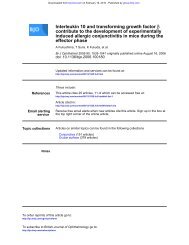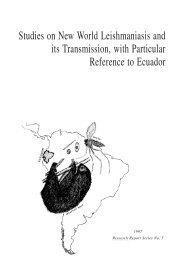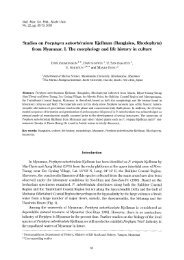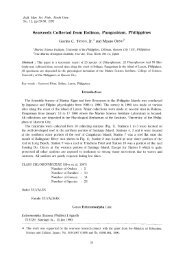Changes in soil bacterial community profiles associated with ...
Changes in soil bacterial community profiles associated with ...
Changes in soil bacterial community profiles associated with ...
You also want an ePaper? Increase the reach of your titles
YUMPU automatically turns print PDFs into web optimized ePapers that Google loves.
Soil <strong>bacterial</strong> communities reflect<strong>in</strong>g land degradation471.0(a)11.0(d)Axis 2( =0.074)Moisture122Axis 2( =0.072)BD2112TNMoisture-1.0-1.0 1.0Axis 1( =0.401)-1.0-1.0 1.0Axis 1( =0.540)1.0(b)1.0(e)12Axis 2( =0.046)MoistureTN212Axis 2( =0.085)121pH-1.0-1.0 1.0Axis 1( =0.675)-1.0-1.0 1.0Axis 1( =0.369)1.0(c)C/N21.0(f)1TNAxis 2( =0.078)21MoistureAxis 2( =0.068)12Moisture12-1.0-1.0 1.0Axis 1( =0.590)-1.0-1.0 1.0Axis 1( =0.411)Fig. 5. RDA ord<strong>in</strong>ation diagrams for the methods and the AWCDs. The triangle and the diamond <strong>in</strong>dicateDEF and BG, respectively. The figures <strong>in</strong> the symbols are replication numbers, correpond<strong>in</strong>g tothat <strong>in</strong> Fig. 1. The solid and broken arrows <strong>in</strong>dicate significant environmental gradients at p=0.05and 0.10, respectively. The diagrams are based on: a, antibiotic resistance MPN method; b, diskdiffusion method; c, 0.2 AWCD (Biolog); d, 0.6 AWCD; e, 1.0 AWCD; f, 1.4 AWCD.



